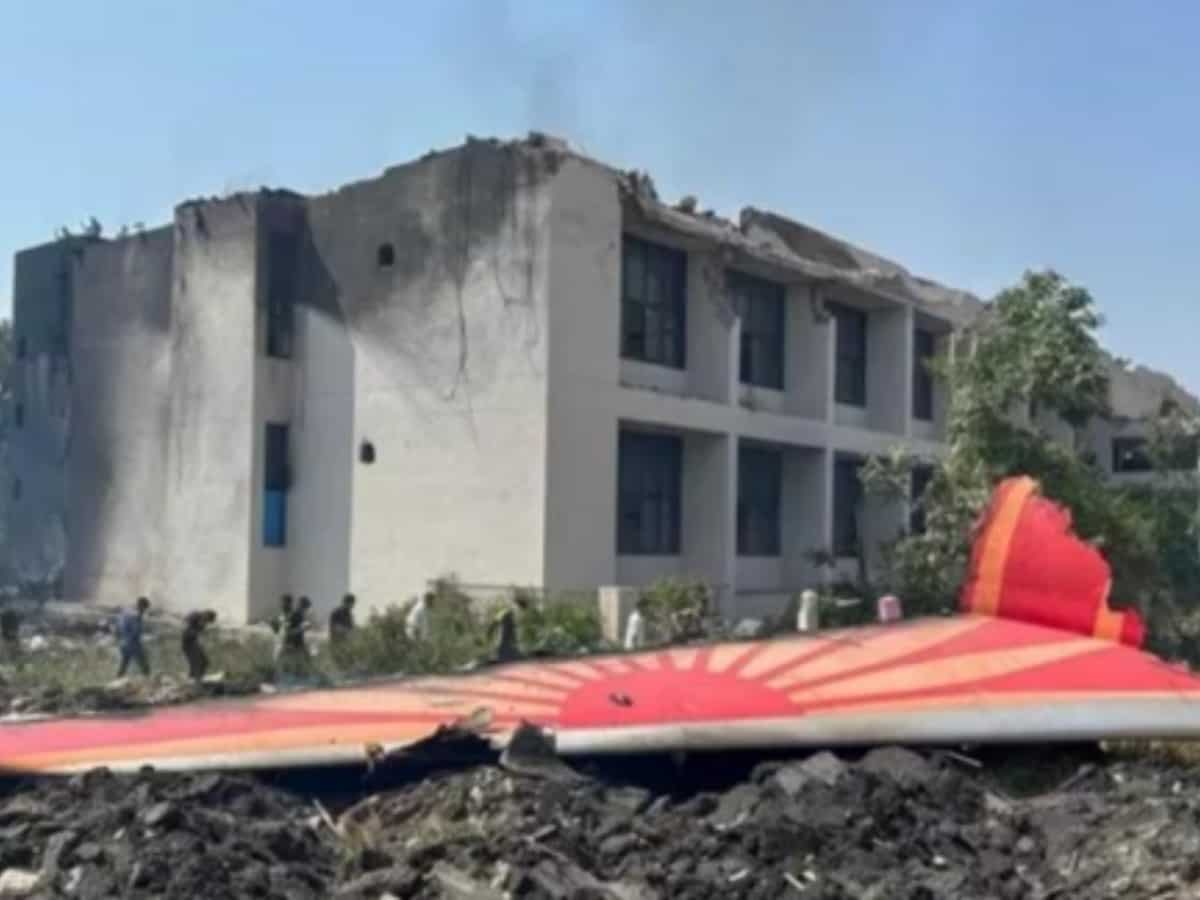Fuel control switches to the engines of an Air India flight that crashed shortly after takeoff, killing 260 people, were moved from the “run” to the “cutoff” position moments before impact, a preliminary investigation report said Saturday.
The report, issued by India’s Aircraft Accident Investigation Bureau (AAIB), did not offer any conclusions or apportion blame for the June 12 disaster, but indicated that one pilot asked the other why he cut off fuel, and the second pilot responded that he had not.
The Boeing 787-8 Dreamliner was headed from Ahmedabad in western India to London when it crashed, killing all but one of the 242 people on board as well as 19 people on the ground.
In its 15-page report, the investigation bureau said that once the aircraft achieved its top recorded speed, “the Engine 1 and Engine 2 fuel cutoff switches transitioned from RUN to CUTOFF position one after another with a time gap of 01 sec”.
“In the cockpit voice recording, one of the pilots is heard asking the other why did he cutoff. The other pilot responded that he did not do so,” it said.
The aircraft quickly began to lose altitude.
The switches then returned to the “RUN” position and the engines appeared to be gathering power, but “one of the pilots transmitted ‘MAYDAY MAYDAY MAYDAY'”, the report said.
Air traffic controllers asked the pilots what was wrong, but then saw the plane crashing and called emergency personnel to the scene.
Investigation ongoing
Civil aviation minister Ram Mohan Naidu Kinjarapu told reporters that investigators probed in a “mature, transparent” way.
“This is a preliminary report. We want the final report to come in, so let us wait for it,” he said.
Earlier this week, specialist website The Air Current, citing multiple sources familiar with the probe, reported it had “narrowed its focus to the movement of the engine fuel switches”, while noting that full analysis will “take months — if not longer”.
It added that “the focus of the investigators could change during that time”.
The Indian agency’s report said the US Federal Aviation Administration had issued an information bulletin in 2018 about “the potential disengagement of the fuel control switch locking feature”.
Though the concern was not considered an “unsafe condition” that would warrant a more serious directive, Air India told investigators it did not carry out suggested inspections as they were “advisory and not mandatory”.
Air India was compliant with all airworthiness directives and alert service bulletins on the aircraft, the report said.
The investigations bureau said there were “no recommended actions to B787-8 and/or GE GEnx-1B engine operators and manufacturers”, suggesting no technical issues with the engines (GE) or the aircraft (Boeing).
The bureau said the investigation was ongoing, and that additional evidence and information had been “sought from the stakeholders”.
Boeing said in a statement it would “continue to support the investigation and our customer”, adding “our thoughts remain” with those affected by the disaster.
Air India said it was “working closely with stakeholders, including regulators.”
“We continue to fully cooperate with the AAIB and other authorities as their investigation progresses,” it said in a statement on X.
The UN’s International Civil Aviation Organization (ICAO) stipulates that states heading an investigation must submit a preliminary report within 30 days of an accident.
US and British air accident investigators have taken part in the probe.
Suresh Mistry, who lost his daughter Kinal in the crash, told AFP his family was still coming to terms with the loss.
“How is possible that there is an internal issue with the flight and nobody knew? Even cars these days indicate when there is a problem. How does it not happen on flights?” he said.
Imtiyaz Ali, whose brother was killed along with his wife and two children, said the preliminary report took “nothing forward” for him.
“And (it) is not even close to a closure,” he said. “It feels like we are at the same spot, where we were a month ago when the crash happened.”
The plane was carrying 230 passengers — 169 Indians, 53 British, seven Portuguese and a Canadian — and 12 crew.
Dozens of people on the ground were injured.
One passenger miraculously survived, a British citizen who was seen walking out of the wreckage of the crash, and who has since been discharged from hospital.
Health officials in the Indian state of Gujarat initially said at least 279 people were killed, but forensic scientists reduced the figure after multiple scattered and badly burnt remains were identified.
This story was originally featured on Fortune.com

 4 hours ago
1
4 hours ago
1





















 English (US) ·
English (US) ·